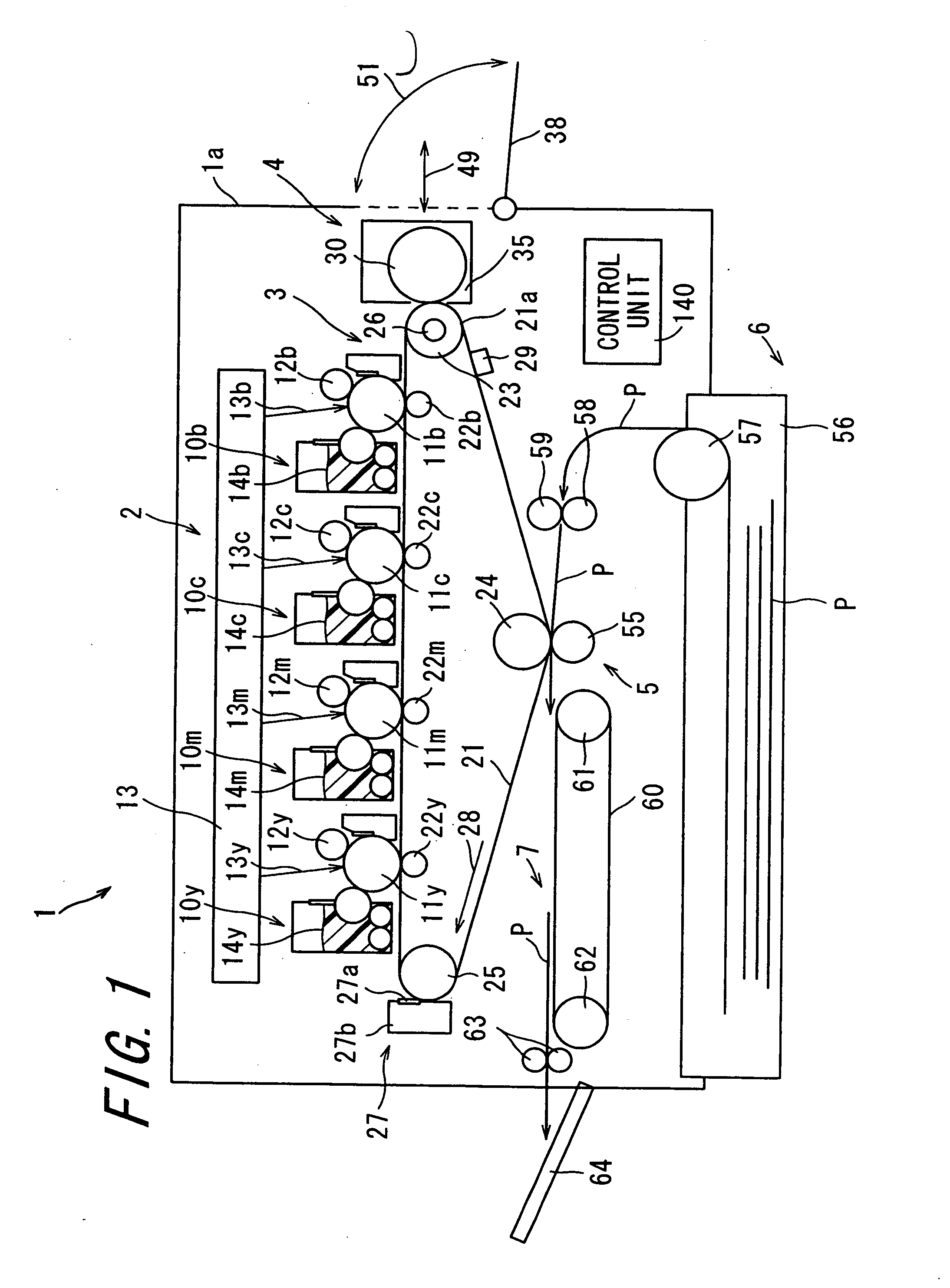Image forming apparatus
a technology of forming apparatus and forming fluid, which is applied in the direction of electrographic process apparatus, instruments, optics, etc., can solve the problems of unsatisfactory increase in material cost, inability to fix multi-color toner images, and much time heed to be spent fixing multi-color toner images, so as to eliminate local variation in equality and avoid splashing and dropping of fixing fluid
- Summary
- Abstract
- Description
- Claims
- Application Information
AI Technical Summary
Benefits of technology
Problems solved by technology
Method used
Image
Examples
first embodiment
[0091]FIG. 1 is a sectional view schematically showing the constitution of an image forming apparatus 1 implemented according to the invention. FIG. 2 is a sectional view showing the structure of the main portion (a toner image forming section 2 as will be described later) of the image forming apparatus 1 depicted in FIG. 1 in enlarged form. FIG. 3 is a sectional view showing the structure of the main portion (a fixing fluid applying section 4 as will be described later) of the image forming apparatus 1 depicted in FIG. 1 in enlarged form.
[0092] The image forming apparatus 1 is built as a tandem-system electrophotographic image forming apparatus in which toner images of four colors: yellow; magenta; cyan; and black are superimposedly transferred one after another. The image forming apparatus 1 is composed of the toner image forming section 2, intermediary transfer section 3, the fixing fluid applying section 4, transferring and fixing section 5, recording medium supply section 6, an...
second embodiment
[0137]FIG. 10 is a sectional view schematically showing the constitution of an image forming apparatus 95 according to the invention. FIG. 11 is a sectional view schematically showing the structure of the main portion (a fixing fluid applying section 96 and a transferring and fixing section 97) of the image forming apparatus 95 depicted in FIG. 10. FIG. 12 is a view schematically illustrating how the fixing fluid 9 is applied to a toner image borne on a transferring and fixing roller 112 by a coating roller 99. FIG. 13 is a front view of the fixing fluid applying section 96, as viewed in the direction of the transferring and fixing roller 112. FIG. 14 is a sectional view of the fixing fluid applying section 96 taken along the line XIV-XIV of FIG. 13. FIG. 15 is a partial sectional view of the fixing fluid applying section 96 depicted in FIG. 13, as viewed in a direction longitudinally thereof. The image forming apparatus 95 is analogous to the image forming apparatus 1, and therefor...
PUM
 Login to View More
Login to View More Abstract
Description
Claims
Application Information
 Login to View More
Login to View More - R&D
- Intellectual Property
- Life Sciences
- Materials
- Tech Scout
- Unparalleled Data Quality
- Higher Quality Content
- 60% Fewer Hallucinations
Browse by: Latest US Patents, China's latest patents, Technical Efficacy Thesaurus, Application Domain, Technology Topic, Popular Technical Reports.
© 2025 PatSnap. All rights reserved.Legal|Privacy policy|Modern Slavery Act Transparency Statement|Sitemap|About US| Contact US: help@patsnap.com



